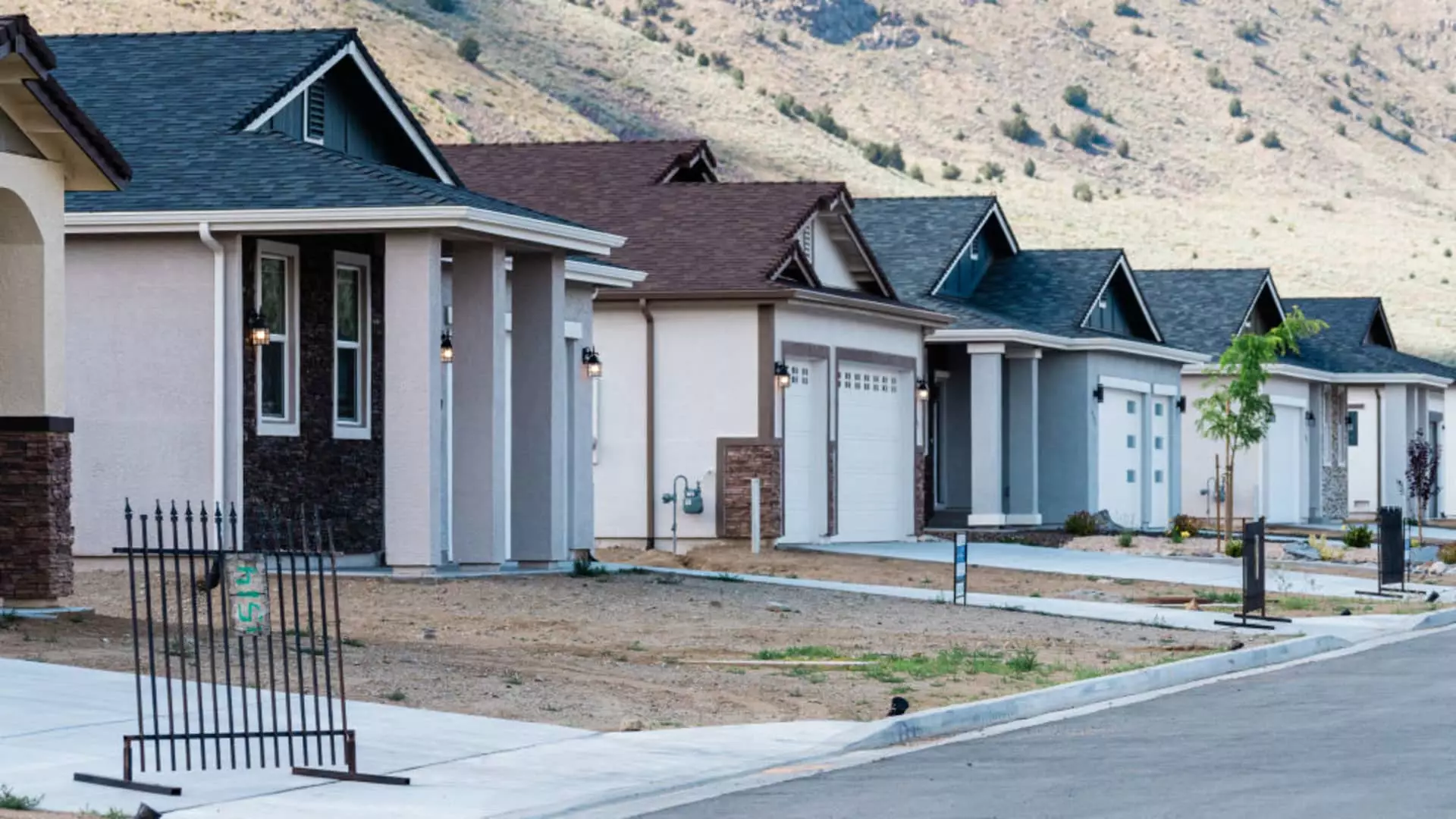In a rather surprising turn of events, homeowners have finally recognized the significant decrease in mortgage rates after weeks of fluctuations. As a result, the Mortgage Bankers Association (MBA) reported an impressive 35% increase in refinance applications compared to the preceding week. This number is even more striking when viewed in the context of a year-over-year analysis, showing a staggering 118% rise in these applications when compared to the same week last year. Such a marked increase demonstrates the timely responsiveness of homeowners to market changes and raises questions regarding the long-term effects on the housing market.
While the average interest rate for 30-year fixed-rate mortgages witnessed a decline, the reduction was minimal—from 6.55% to 6.54%. Interestingly, the points associated with these loans also decreased slightly, indicating a potential easing of lending conditions. Over the course of the last month, a more substantial drop of 33 basis points has been recorded, yet the current figure remains significantly lower than the same period last year by 62 basis points. This suggests a gradual but noticeable easing in the cost of borrowing, potentially enticing more homeowners to revisit their financing options and take advantage of better terms.
Despite the upturn in refinance applications, homebuyers still face numerous challenges. A 3% weekly increase in mortgage applications for purchasing homes highlights a slow recovery; however, this figure remains 8% lower than it was this time last year. In addition to high interest rates, homebuyers continue to grapple with elevated housing prices and limited inventory. Analysts point out that many potential buyers are adopting a wait-and-see approach, speculating that rates may continue on a downward trajectory, which would allow them to secure even more favorable financing.
The refinance segment accounted for 48.6% of total mortgage applications last week, up from 41.7% the week prior. This surge is notably higher than the 29% recorded one year ago. The robust demand for refinancing, particularly for conventional, FHA, and VA loans, speaks volumes about consumer sentiment and the current market landscape. Homeowners are proactively seeking to lower their monthly payments by capitalizing on the recent rate decrease, contributing to a lively refinancing environment.
The Unpredictability of Market Trends
Finally, it is essential to acknowledge that predicting full market trends remains fraught with uncertainty. Matthew Graham, COO of Mortgage News Daily, aptly summarizes the unpredictability inherent in mortgage markets, attributing much of the volatility to consumer price index (CPI) fluctuations. Homeowners and prospective buyers alike must remain alert to these potential changes that can markedly influence their financial decisions. In this complex landscape, the subtle interplay of interest rates and broader economic indicators will continue to shape the mortgage refinancing narrative.
The recent spike in refinancing applications reflects a significant shift in homeowner behavior, driven by declining mortgage rates amidst persistent housing challenges. Understanding these dynamics is crucial for stakeholders navigating the ever-evolving real estate market.

